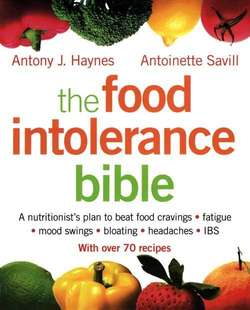Читать книгу The Food Intolerance Bible: A nutritionist's plan to beat food cravings, fatigue, mood swings, bloating, headaches and IBS - Antoinette Savill, Antoinette Savill - Страница 16
Case History
ОглавлениеThe first case to share with you is that of one of my clients, who came to see me with a whole list of complaints. Sally Ann had energy problems, mood problems, digestive problems, skin problems and more. As part of our consultation she completed some questionnaires. One of these, called the Metabolic Screening Questionnaire, is scored on a severity and frequency basis so that the more severe and frequent the symptoms, the higher the score. The maximum score for the 70 symptoms on the questionnaire is 280 – but anything over 80 is indicative of someone with fairly compromised health. A healthy individual may score as little as 10 or less. Sally Ann scored 97. Her doctor was considering antidepressants and hormonal intervention to help her mood, irregular menstrual cycle and painful periods. A thorough examination of her health history and diet and lifestyle revealed that there were many potential areas that could have been contributing to Sally’s overall poor state of health. Her diet was particularly high in wheat, which was being consumed at each meal. This was partly due to a lack of time to choose anything different, but none the less Sally was fulfilling the number-one criteria for food intolerance: a high dose and repetitive intake of the same food. When questioned, it was not clear-cut that her increased wheat intake had coincided with her multiple symptoms. However, since the priority was to improve digestive function, I recommended a wheat-free diet.
Sally came back about five weeks later. Her Metabolic Screening Questionnaire was now showing a score of 3 – yes, 3. She looked like a different person: she had lost 8 lb without reducing her caloric intake (in fact, if anything she had eaten more food than usual), her skin had improved, her menstrual cycle had caused her no problems at all and her sex drive had returned. Her poor mood and ‘foggy’ head had gone, the need to clear her throat had gone, her sore muscles were no longer troubling her, her energy was markedly better and she had no headaches any more. Although in the first few days she had felt markedly worse, this is a well-known sign of withdrawal from a biochemical addiction, and confirmed that she was on the right track.
This was a truly staggering result, and not something I could have predicted. The good news was that no other system in her body had reached a state of exhaustion so that it took only the avoidance of the culprit food to help Sally return to a good state of health. It was also fortunate that she evidently only had one major culprit food. To think that she could have been put on antidepressants, which would not have solved the problem, of course. I wonder how many others with cognitive and mood disorders would benefit from looking at their diets as a source of their symptoms. It is well known, for example, that a large percentage of people who suffer from coeliac disease also suffer from bipolar disorder (schizophrenia).
